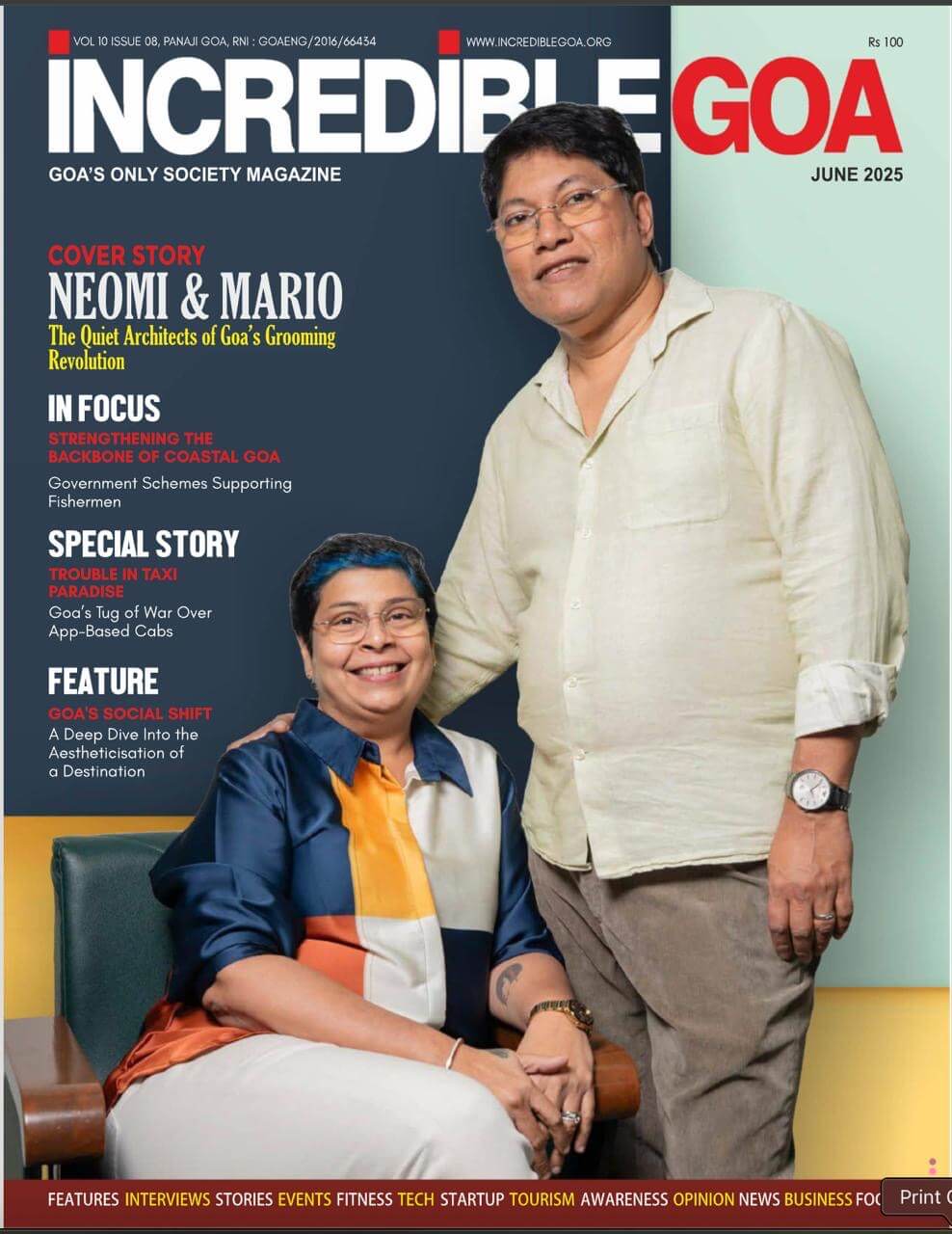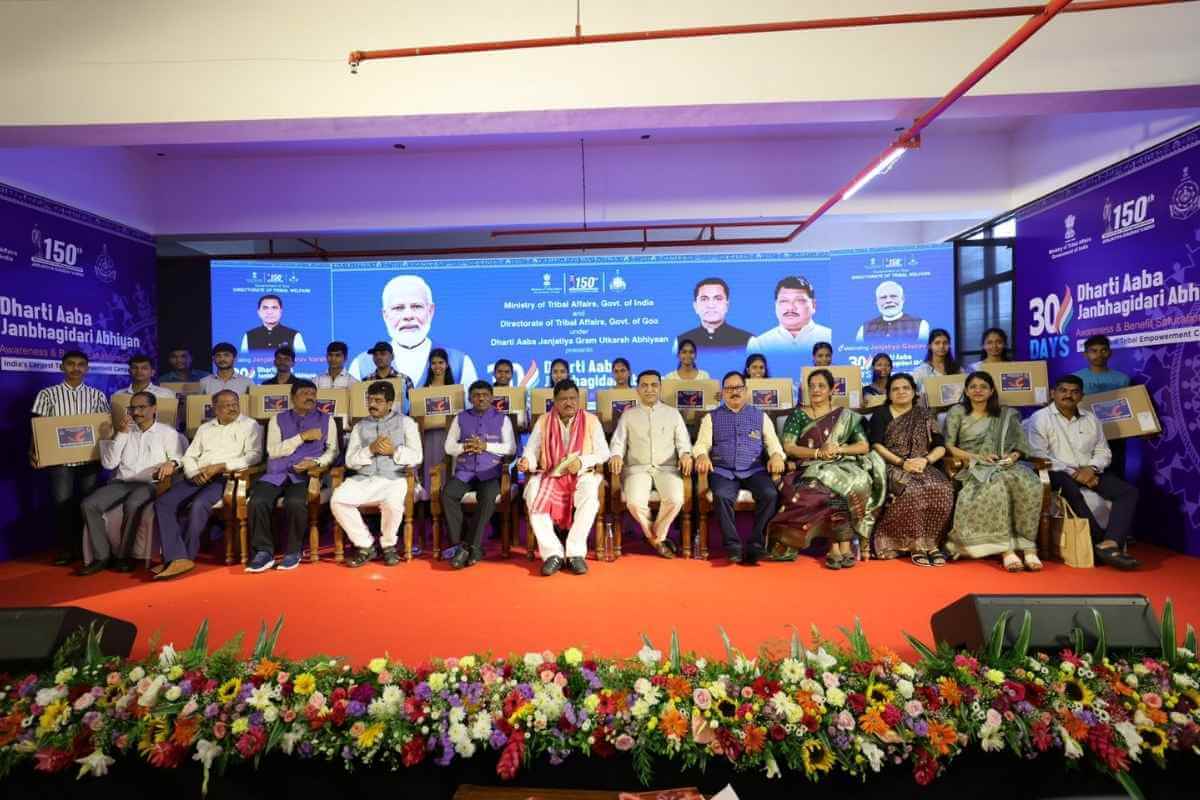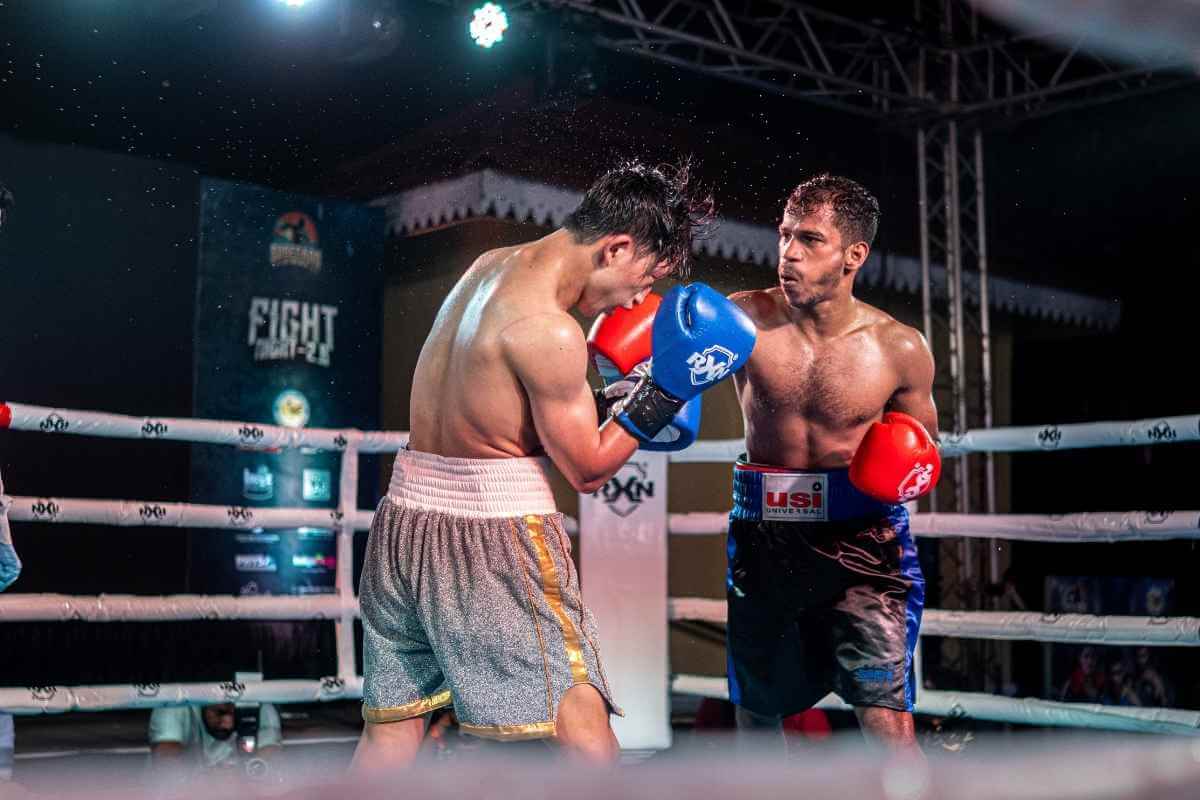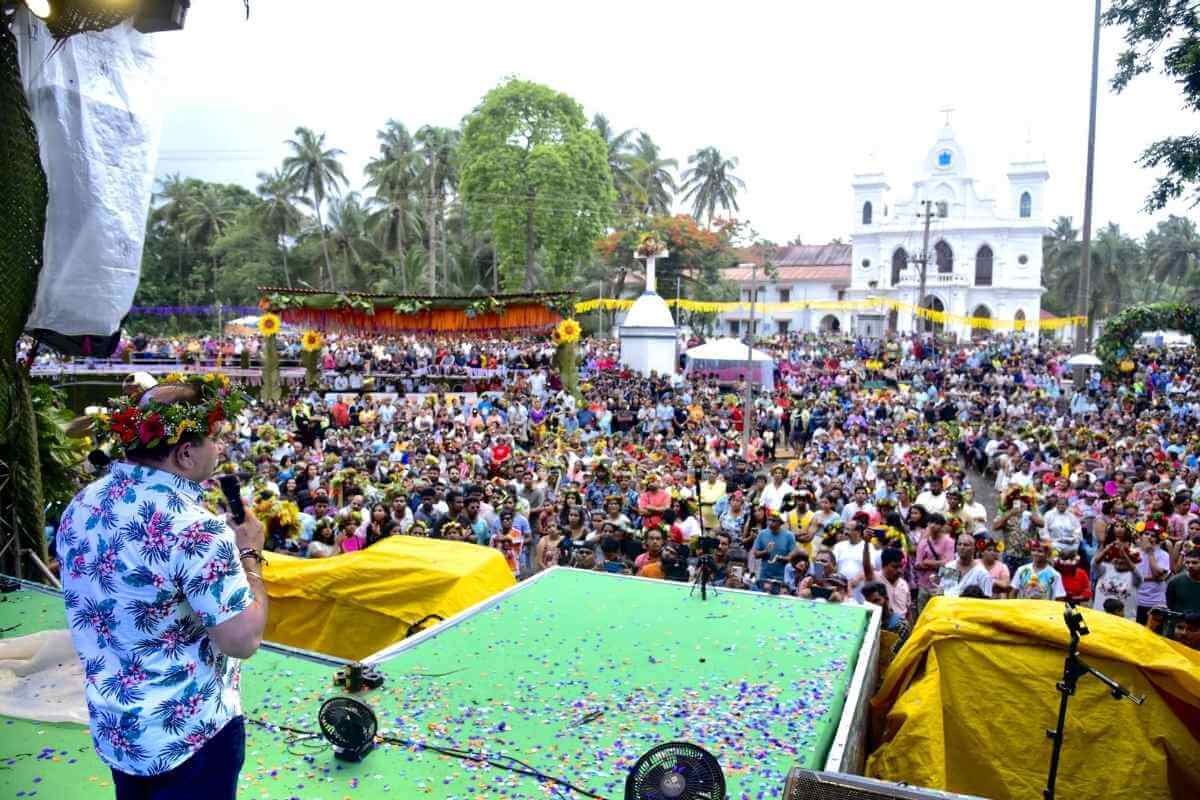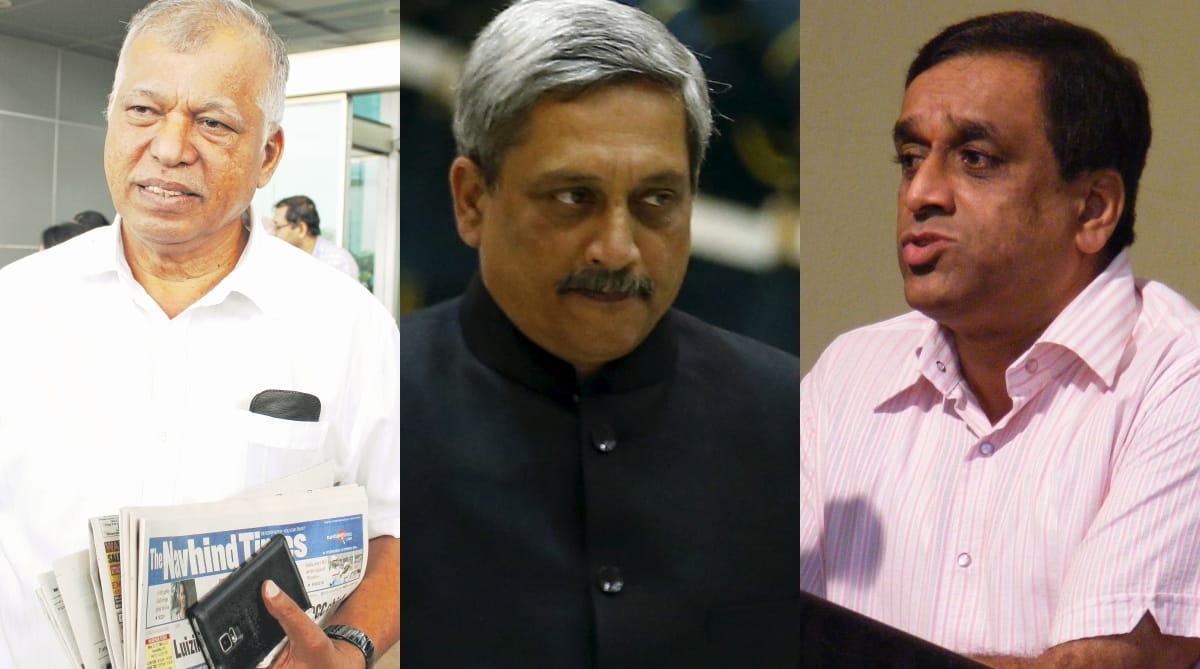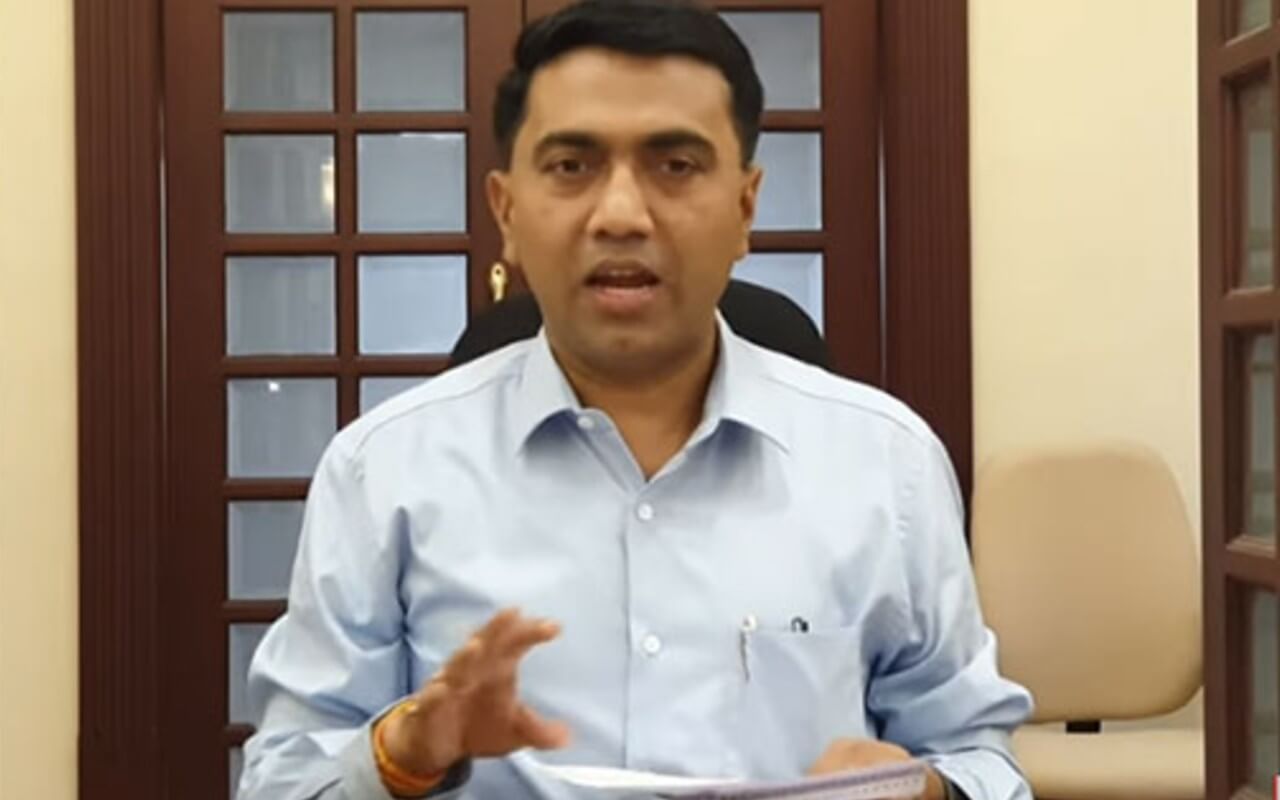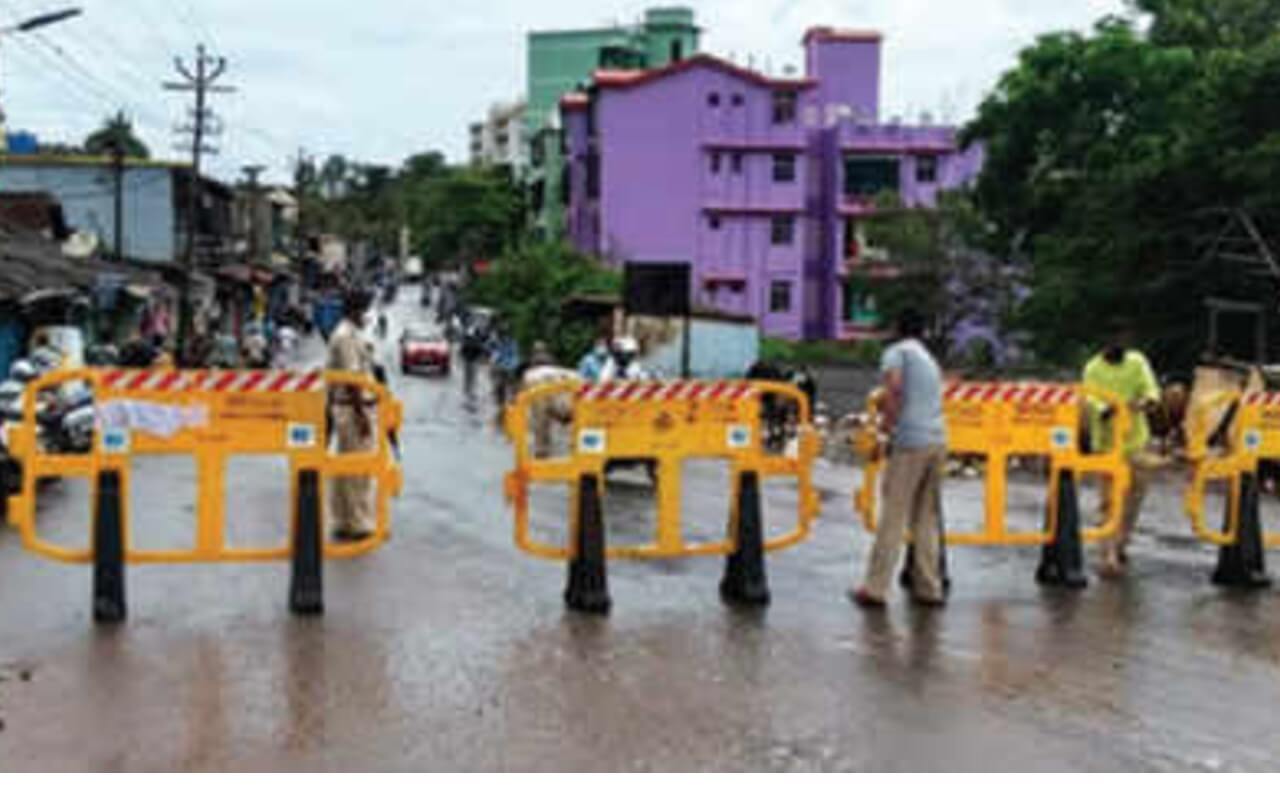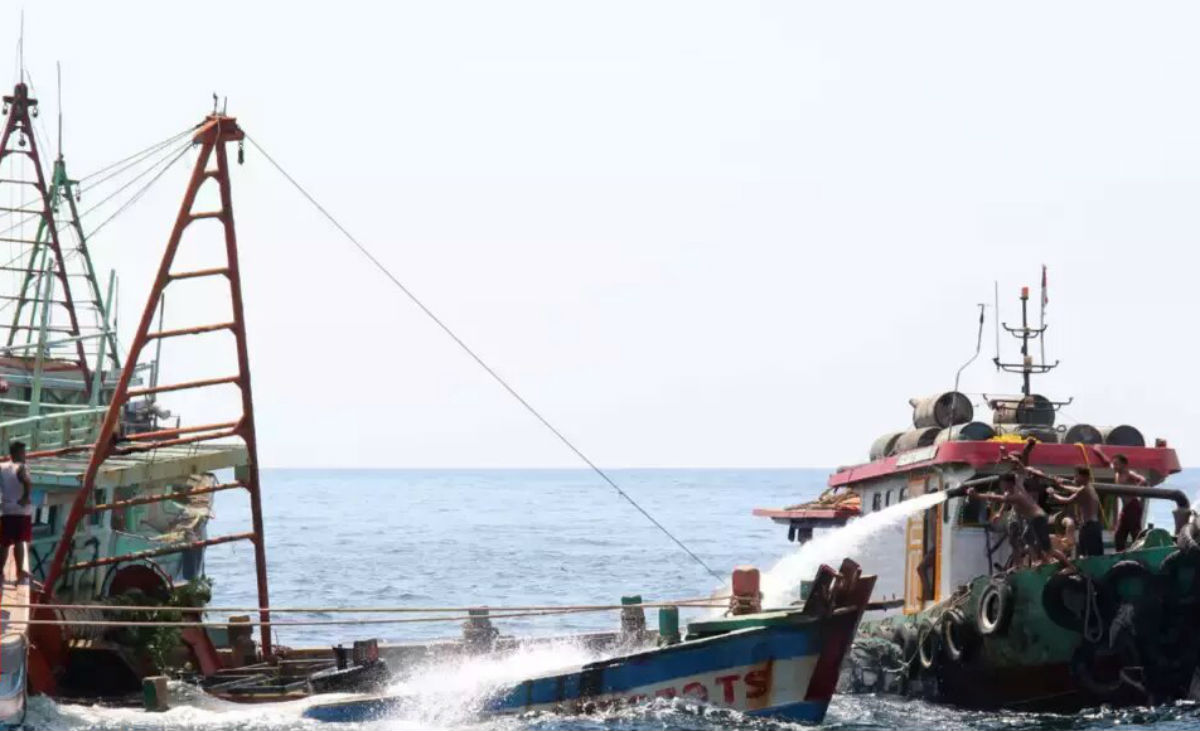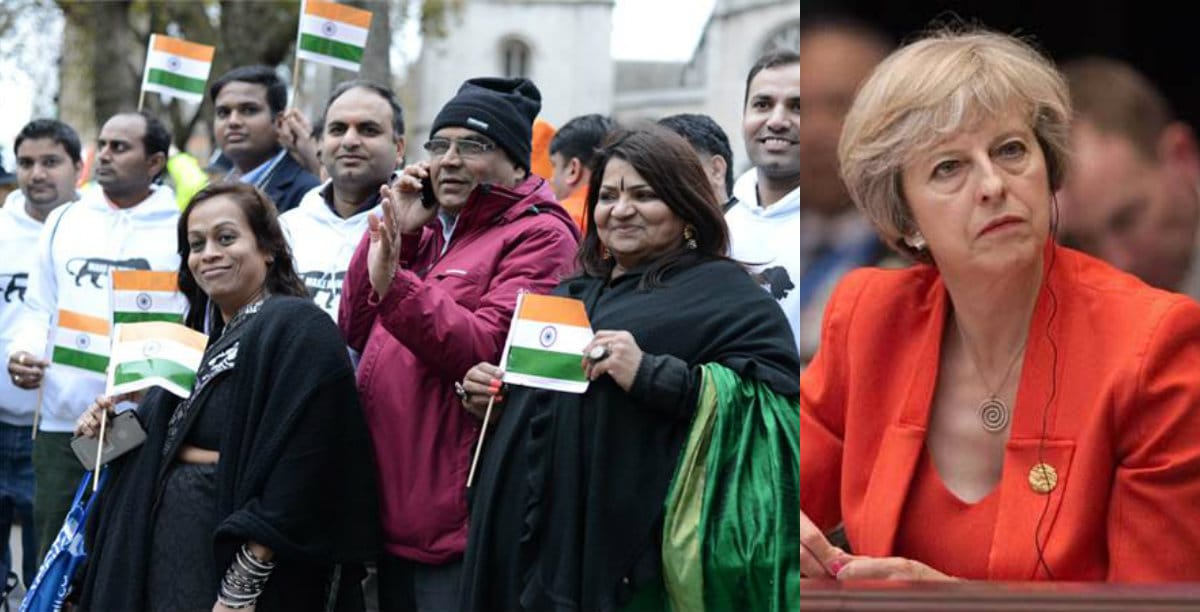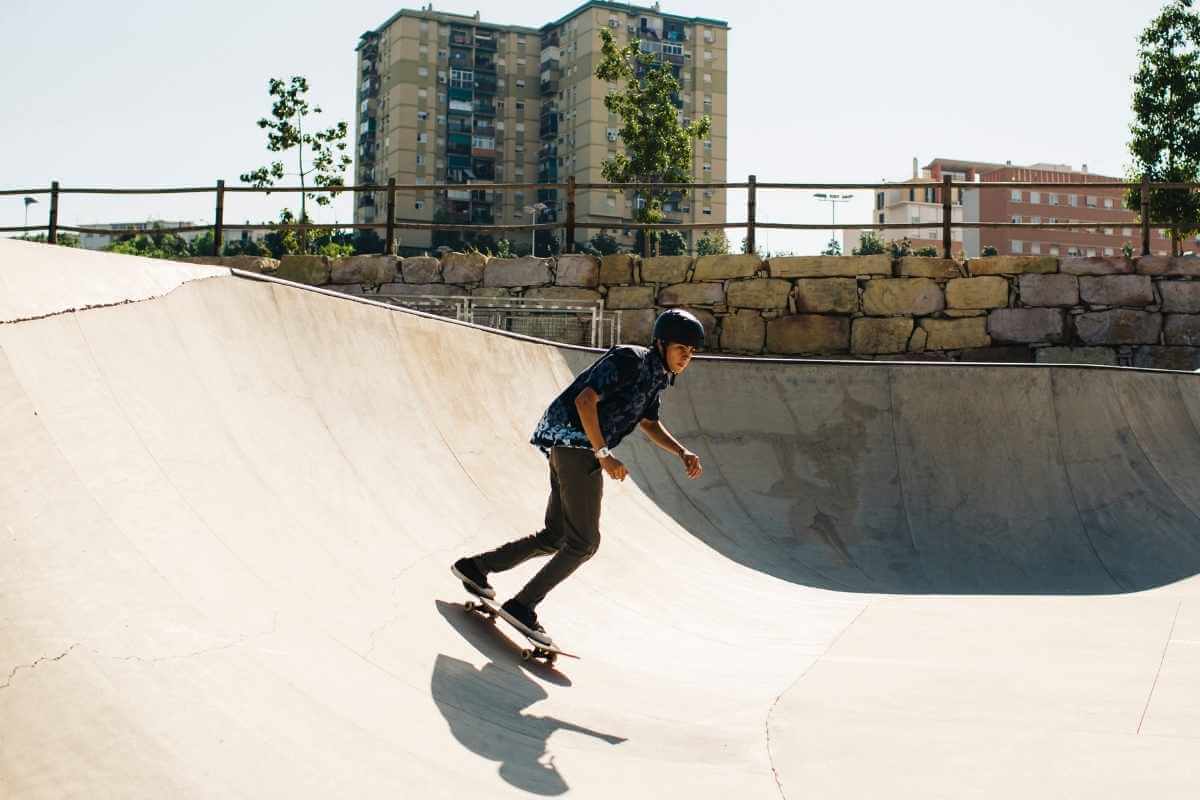Don’t many parents dream their little children, singing rhymes in front of their family or a small song at a festive gathering; will one day shine and be famous? Well, little Sonia had a similar beginning to what would go on to become her career and take her all around the world. Sonia Shirsat is a well-known name in Goa by now for sure. Her songs have taken everyone by storm. She has often been interviewed and featured, but today, you will get to know her real story, from the first bricks she used to build her career to the nuts and bolts fixed in between. Real stories are proof that impossible things are possible! So here is a real story of a singer I bet will inspire you to chase your dreams too.
On the birthday of the Lord who blesses all good beginnings, Sonia sang her first song. “I was seven when I first sang ‘Papa kehte hain’ for a Sarvajanik during Ganesh Chaturthi.” From then on she was a frequent, at school competitions as well as in college. Now, if Ponda were to choose people it truly considered family, it would definitely vouch for this ‘papa kehte hain’ singer. Sonia’s birth, residence, and schooling – all have been in Ponda. Only after that did she go to Miramar to study at Salgaonkar’s Law College, following which she taught law to the students as visiting faculty for four years.
Despite undergoing a rigorous course of law, her singing career actually kick-started during her bachelor’s course in law, with a Margao based band called Status 4. The amazing fact about this band was that it was led by Dr Alan Abreu, who was Principal of the BEd College in Ponda, is the Dean of the educational faculty of Goa University, and also a family friend. He had been impressed watching her sing western pop for university festivals and decided to take her on. With such a remarkable person leading the band and a determined Sonia who didn’t quit her master’s program, teaching, or her singing, her parents could only but allow her to chase her dreams without any restrictions! So at the turn of the millennium, when an all-male band offered to take her as female lead singer for a program in Kathmandu, off she went! “The hotel said they wanted a female singer with this band since all the other bands were booked. They called me as someone suggested my name so I joined them. That was my first band performance. Usually, I would practice only 2-3 songs for competitions, but here we had to practice 25 songs for the live performance” Said Sonia.
But how did it come till this? Was Sonia professionally trained under some big artist? No. “It comes naturally to me. It’s all gifted from above” She says, simply. “My mother and my grandmother used to sing but only as a hobby. She was passionate about it, so she would sing a lot. My father, who is a doctor, would also sing sometimes. He used to play old Hindi songs of famous veteran singers. I heard a lot of Hindi film music in my childhood. I figured I had their passion in my genes because I loved singing too, so I would practice regularly. I would practice not knowing that I was practicing – at home, in the car, anywhere, I would just keep singing.” Such were her humble beginnings.
But singing Hindi music wasn’t that easy. Sonia elucidated it thus, “The problem is that female singer like Lata Mangeshkar and others of Bollywood sang in a higher range of voice called the soprano, specifically because they sang for duets where the male voice’s range had to match with theirs. Technically speaking our vocal cords are strong when we use our talking tone, but the head voice (soprano) has to go to another range and needs training. So I would prefer singing songs by male singers as I didn’t have to struggle with the high pitch.” Like with most youngsters MTV caught her attention and she was introduced to western music. “Those years beautiful albums were being released by Whitney Houston (Bodyguard), Mariah Carey (Butterfly), and I could sing in Whitney Houston’s voice, Celine Dion’s, even Tony Braxton’s. So I completely switched to Western music as it was easier for me to sing.” She said. She moved from Hindi to English, then Konkani too. Sonia recalled, “I used to listen to a lot of Konkani songs, because of my father. But I never sang one until after the band, in Law College.”
So all of you who are reading this, know that if you have that passion for something let it drive you towards it, no matter what facilities you get! That passion will help you get it as it did for Sonia. Soon after, she started singing in competitions and bagged gold one after the other.
A year after that competition one of the Portuguese guitarist maestros called Antonio Chainho based in Lisbon came down to Goa for a workshop. He was looking out for a singer who could sing Fado. For Sonia, this musician orchestrated the turning point of her life. She recounted, “I wasn’t very keen on it as it was in a language I didn’t know then, but he insisted that I learn Fado, so I did. I performed with him and then later, after the performance, he called me aside and told me that my voice was best suited for Fado. He said if I wanted help I could always contact him. That was the first time someone evaluated my voice and suggested what it was best suited for.” And that was when her journey into Fado began.
Fado music tugs at the listener’s heartstrings and Sonia tugged at them in Goa, Daman, Bangalore, and Delhi. Simultaneously she taught at the law college, sang in the band and also sang for a Konkani program ‘Bhangrale Ghoi’. The multitasking couldn’t have gone on for long. The time had come to be master of one, instead of a jack of all trades. In 2008, Sonia got a chance to travel abroad. As much as she disliked it, the travel schedule clashed with her classes, and she had to discontinue teaching to divert all her attention towards singing. Certain periods in life are extremely dicey, where one is faced with many options but only one choice; and the decision made then is irreversible so it has to be taken with utmost care. If it is right, it will completely change your world. This decision of Sonia’s was similar. It marked the beginning of a new chapter.
Sinking into Fado was a whole lot different than what she had expected. As Sonia replayed her memories she said, “During my stay in Portugal, every evening at seven, I would go to the Fado houses which were set up for Fado performances. They were small structured houses with restaurants wherein people would gather, have some snacks, wine or coffee. There were two chairs kept for the guitarist and for the Fadista who would come and begin their song. While the Fadista sang, nobody would leave in between, or talk, or even make the sound of cutlery. After the Fadista sang four songs followed by another singer, a break was given where you could leave or take a break. This was the rule people followed in Portugal.” But the biggest surprise and challenge for her came subsequently. “I wrote a letter to Fundacao Oriente thanking the Director for the scholarship. I informed them that I was coming to Portugal and as a token of appreciation I would like to sing to him. He wrote back to me saying that I could have a solo performance in Portugal! I only had a month to prepare for the concert. While I didn’t perform a single solo concert of Fado in India, I was given the chance to perform in front of 450 people in the very land of Fado. That was a major milestone in my life. I sang Fado with a sitar with the help of a Portuguese gentleman having a lineage to Goa, followed by Mando – a Goan folk song which many people call as the Goan Fado (I disagree) with Portuguese instruments. I invited Maestro Antonio Chaihno who played for me beautifully. Through my singing, I wanted them to feel the very meaning of Fado, and show them the form of music where beauty lay in the poem. I tried singing a Hindi song ‘Humne dekhi hai inn ankho ki’ with the Fado instruments, deciphering the cross culture connection between the two countries. Even though I was not an established singer, the tickets were sold out two days prior to the concert. There was a waiting list, I was covered by three of their major national newspapers, I was on their radio, and screened live on three of their national channels.”
From being a student to a teacher, is a jump not many are capable of. It is only possible when one has a strong hold on the subject and is capable of sharing its minute details too. Sonia was the sole professional Fado singer in Goa. She had gathered immense knowledge from Portugal, and she urged to share it with the people of her home. Back here, the Taj group of hotels approached her, requesting her to train people in Fado if it was possible. “I couldn’t have been more willing! We started a new project called Fado de Goa from May till October to train new singers. A syllabus had to be drafted. The students were divided into different batches – 2 in Margao and one each in Panjim and Vasco. With this, we began with the training! They had exams, theories, and assignments. We had many singers from all over Goa who were very keen to learn more and more about Fado. Out of over 200 students, 38 were selected for master classes and many participated in the competitions. The response was quite well from the participants and audience; we worked vigorously and it ended well.” This was followed by a show in Maquinez Palace called Festa de Fado. The students included people across all ages – from a grandfather and grandchild pair, an old husband and wife pair, to parents and children pairs. Sonia found Fado aficionados growing, and that elated her.
Sonia sang in Fado concerts of international artists in prominent places such as Kala Academy, Clube Vasco da Gama and Cidade de Goa. She recently performed in the Fortune Hotel in January this year and is back from a two-day concert in the Holy Land of Israel. Besides these, her music has also taken her to Canada, USA, Luxembourg, Portugal, France, Middle East, Nepal, Singapore, Macau…the list seems endless! But one venue has a special place in Sonia’s heart. She revealed, “Cidade de Goa has been a place where I have been singing Fado from the beginning. Sometimes there were very few customers or none at all, but Cidade de Goa would still have the Fado nights. It is their dedication and effort towards Fado to keep the show going. Looking at their consistency I also continued because of Fado. It’s been 14 years now that I have been singing Fado in Cidade de Goa.”
Considering its rarity, Sonia decided to start a project called ‘Fado in the City’ in 2016. Starting in May, the project involved performing ten concerts in places that were new to Fado. She wanted to take it to every corner of every city. She organized Fado nights free of cost for people who never heard about Fado or the language. Describing the beginning of this project Sonia said, “We had our first show In Sunaparanta Altinho’s auditorium, and then at the Institute of Menezes Braganza, Bay 15, Maracal restaurant, the Heritage House of Casa Figueiredo in Loutolim and at the closing night in Nostalgia, Raia. During these concerts, we witnessed a big crowd which would overrun the accommodation in these places. At each venue, we sang different Fados so it was new for the audience every time.” Ecstatically she further added, “People loved the performances! I would interact with the people and explain the concepts of Fado. After every performance, we would distribute small booklets which had fifteen chapters based on Fado. It was all in an attempt to make Fado come alive among the people, so that people didn’t just listen to Fado, but also experienced it. The response was really good from the people. Our aim was achieved.”
God helps those who help themselves. Sonia didn’t go door to door seeking help. She worked her way from ground zero and built a Palacio of Fado lovers. She emphatically said, “I have never approached the government as yet. As of now, we are managing on our own, we have sponsors, facilities and resources. The important aspect here is the aim, to make Fado important to people.” Her efforts didn’t go unnoticed. She was awarded the Yuva Srujan award of Goa in 2011. Recently her name was suggested by the Goa Art and Culture department to Sangith Natak Academy of Delhi for the Ustaad Bismillah Khan Yuva Puraskar which she received in 2017, for her contribution to music and Fado. Because of this, she was also approached by the ‘Society for the Promotion of Indian Classical Music and Culture Amongst Youth (SPIC MACAY)’ which promotes classical and cultural music and art forms among the youth, because the youth would not listen to it on their own. They tie up with great artists and asked them to spend 2 hours in different schools. Some of her classes were very interesting. “I had workshops of Fado in Jaipur and Delhi. I was also called to IIT Kharagpur for an International Convention of SPICMACAY where there were many artists and artisans for wood carving, flower making, crafts, and South Indian classical dance. Out of the ten students I had, one was from Pakistan. I also had a 3-hour workshop in MES College where 5-6 were from Afghanistan amongst the audience. So I can say I am very happy with where I am, Fado is growing at its own pace!”
Describing the competitions she attended, Sonia said, “During the time of my Bachelors I participated in a French Singing competition by ‘Alliance Francaise’. There were 25 centers and we had to send our songs recorded on cassettes; the selection was being conducted in Delhi. I won from the Goan centre and got the chance to go to France for a month. Back from France, I continued my law. One day I read about a Portuguese competition called ‘Vem Cantar’ in the newspaper. By that time I had won the French, Hindi, and Konkani singing competitions and I wanted to go for this too. I participated and won this competition too.”
Fado literally means destiny. History has various versions of its origin. One is it was sung by seafarers who longed for their family and home. Another is it was sung by the street comfort women of Portugal. Either way, Fado has mournful melancholic tunes and meaningful lyrics. Sonia expressed her initial skepticism about learning Fado, “In the pool of mixed culture in Goa, I didn’t know how many people would be open to Fado music. Fado is melancholic music; it is an acquired taste, not commercial.”
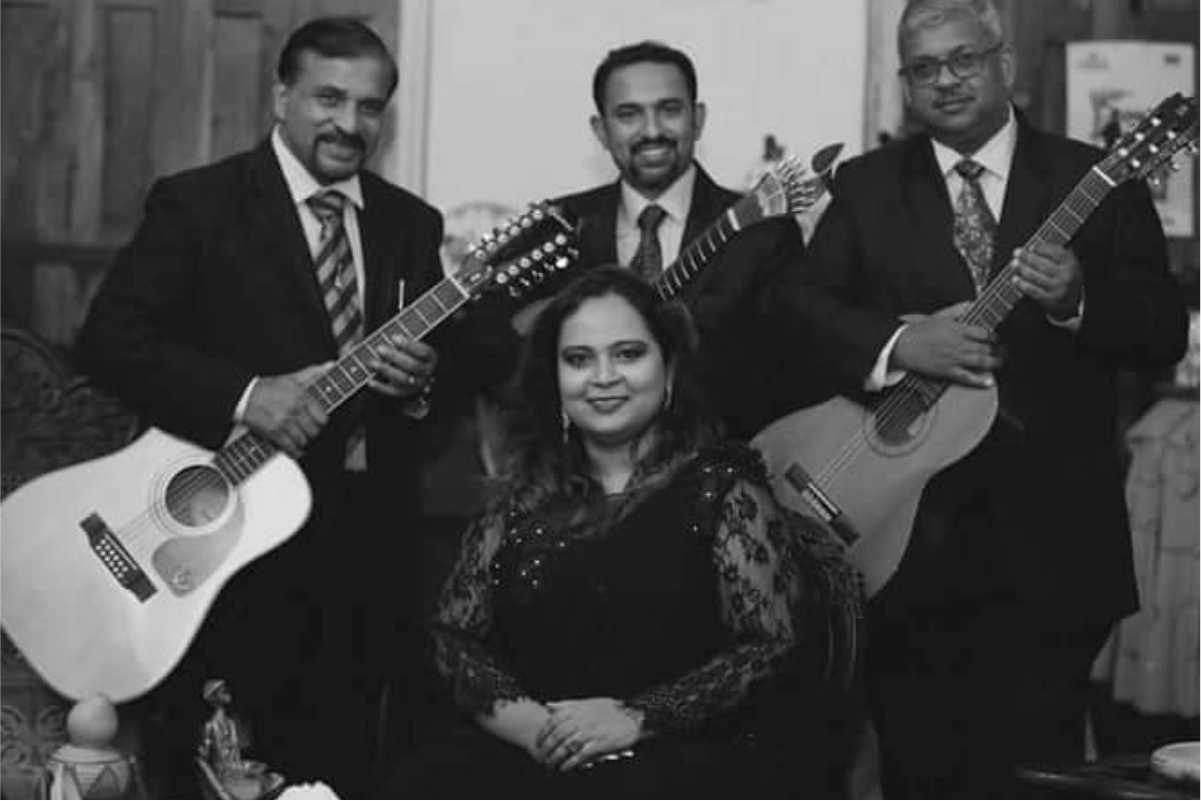 Sonia fondly described her time in Portugal surrounded by music. “Previously I had gone to Portugal in 2006 on a scholarship from Fundacao Oriente, when Maestro Antonio Chainho had helped me learn about the Fado. It was an eye-opening experience for me, with the language being my only limitation. So I would go with my mother because she knew Portuguese.” Still, this limitation didn’t hinder the relationship between Fado and Sonia. She revealed her brave decision, “I decided to go to Portugal alone. I wanted to completely sink into Fado. My mother’s distant cousin who stayed in Portugal arranged for accommodation as a paying guest in an old lady’s house. It was a huge house with 14 rooms on the first floor and the lady lived all by had learned a few survival sentences from my mother. The old woman was a kind lady who was very patient with me. We both enjoyed each other’s company so much that she would get cranky when I would leave for Goa.”
Sonia fondly described her time in Portugal surrounded by music. “Previously I had gone to Portugal in 2006 on a scholarship from Fundacao Oriente, when Maestro Antonio Chainho had helped me learn about the Fado. It was an eye-opening experience for me, with the language being my only limitation. So I would go with my mother because she knew Portuguese.” Still, this limitation didn’t hinder the relationship between Fado and Sonia. She revealed her brave decision, “I decided to go to Portugal alone. I wanted to completely sink into Fado. My mother’s distant cousin who stayed in Portugal arranged for accommodation as a paying guest in an old lady’s house. It was a huge house with 14 rooms on the first floor and the lady lived all by had learned a few survival sentences from my mother. The old woman was a kind lady who was very patient with me. We both enjoyed each other’s company so much that she would get cranky when I would leave for Goa.”
Fado has a great power over people. Fado music has many varieties. It is called Morna in Cabo Verde, Mando in Goa, and in India, it’s called Gazal. The beauty of these songs lies in the vocals of the singer for which you don’t need a big orchestra or many violins. A Fadista (Fado singer) is supposed to convey the emotion through her singing but she needs her base and beats with the help of the musicians. Her rendition of Fado music drew thousands of ears closer. Like most semi-classical genres, Fado has certain rules which other genres might find strange. For example, Fado has a musical rendition similar to the Hindustani Bandish, where one sings a raga and inserts a different poem in between the notes. Another culture of Fado musicians Sonia described as, “If a Fadista copies an original then there’s no value, but if a Fadista interprets the existing Fado with another Fado then it is appreciated by the people. Such practices exist only in the older cultures and cannot be found in contemporary music.”
Having lived and learned in Portugal, its music became one with Sonia. “I realized I had a connection with Fado and so I decided to focus on this field,” Sonia exclaimed. She had not only found a connection with the music but with its people as well. “I had to keep revisiting Portugal for a month every year to clear my doubts regarding this music. Thankfully I had friends in Portugal who were mostly senior citizens. I used to list down my doubts from home and present it to them there. My friends were mostly musicians, Fado writers or poets. They found me amusing! I was like a kid to them asking questions and discussing it. Sometimes I used to ask questions which would baffle them because they had never thought of it before. So they would give me books on Fado and its history. Till today I mail my doubts to them and they happily write back to me. The heaviest part of my luggage used to be the rare books I would carry back from Portugal.”
The thing about classical and semi-classical forms is – their learning bank is vast, requiring constant practice and up-gradation. “In June 2008 I was called to the Bangalore School of Music and to Delhi to sing Fado. That was when I realized that I needed to grow and upgrade myself, there was a demand for Fado and I needed to learn more” said Sonia.
Like every parent who plans extensively for their child, Sonia has great plans for the future of Fado music. She explained, “One day I’d like to make Fado houses in Goa as they have in Portugal. I want the singers to know what they are singing so that they can feel the song. We also need an informed audience which knows the language so that the singers don’t fool the crowd. At every performance and concert, we inform the audience about the Fados sung so that the audience knows what we are singing. Right now we have few Fado musicians. So we plan to conduct workshops for the existing musicians to learn the Fado style too, or at least understand its basics.”
Sonia’s music has grown with her. As she evolved into a soulful sought-after singer, she lifted her students and musicians too. Reflecting on the growth of the Fado she said, “I went for two concerts to Israel (Bethlehem and Jerusalem) with Goan musicians. Usually, I had musicians from Portugal accompany me on tours. But this time I had our own Goan musicians who took a Portuguese tradition to a place which has never witnessed Portuguese culture, through an Indian singer and musicians. It was a heartwarming moment for me.”
As Dr Stephen Post says, good things happen to good people! Many good opportunities came knocking on her door and took her to new places. And in return, she popularized her love throughout the State. She had started by singing Hindi songs, moved onto English, Konkani, and Portuguese; till today she has sung in 14 languages! After all her travels, success and experiences, she has just one thing to say to the younger generation, “Remember your roots, don’t forget where you come from!”


